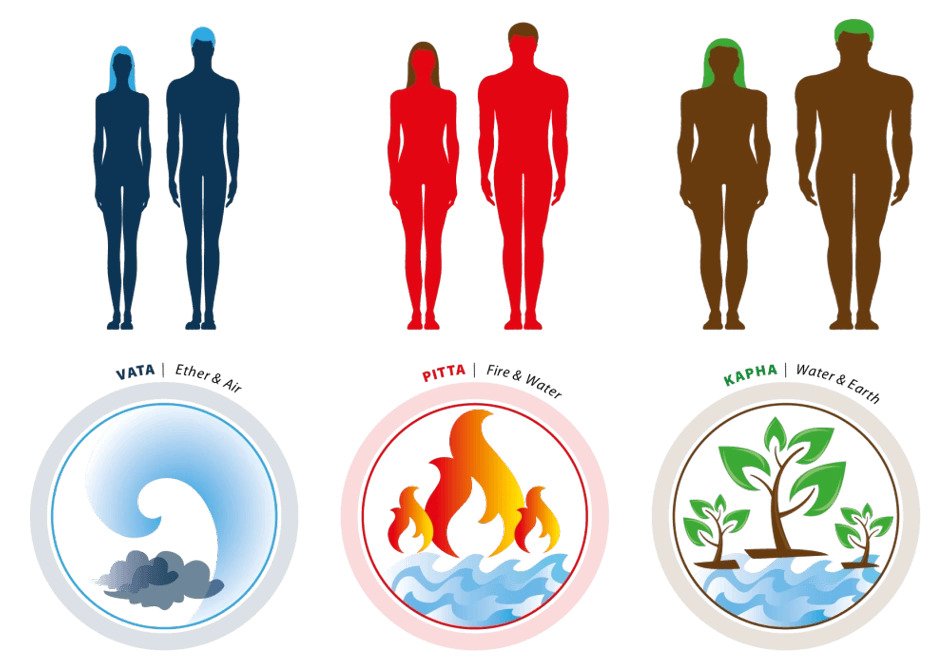When we look at the people around us, we see that we are not alike in every way. The standard or average person is a statistical abstraction that does not really exist. Each one of us is different from the others in many ways, both physically and mentally. Each person has an individual constitution that is different from that of any other person. People's shapes and proportions, temperaments and characters are infinitely varied, and these differences need to be taken into account when considering health.
To find happiness and well-being in life, we need to know our character. And if we want to have harmonious relationships, we need to understand other people's characters. Food that is good for one person may not be so tasty for another. For example, one person may be crazy about spices, while another person, even one who is very similar to him, may not like them. Similarly, psychological states that are favourable to one person may be unacceptable to another. One person's competitiveness encourages great achievement, while another's competitiveness inhibits and leads to failure. Failure to understand one's own constitution leads to illness. Standard treatments do not take account of individual characteristics and are therefore not as effective as they could be. Ayurveda, on the other hand, recognises and takes into account different types of constitution. It helps us to have a clear understanding of the diversity of people and to identify our own personal capacities and personality traits.

The basic types of constitution correspond to the three biological principles, the so-called doshas, which are the basic forces that shape the physical plane of existence. In Sanskrit, these forces are called 'vata', 'pitta' and 'kapha'. In terms of their action in the body-mind system, they correspond to three of the five basic elements: air, fire and water. Most books on Ayurveda focus on the physical manifestations of these three types. However, we will focus on their mental manifestations. But first, let's find out what vata, pitta and kapha are and how they work.
Vata - air
The biological origin of air is called "vata", literally meaning "that which blows", i.e. wind. An additional element of vata is ether (also called space), the field in which the wind moves. The places where vata accumulates are the cavities of the head, joints and bones. Vata controls movement and is responsible for the discharge of all impulses, voluntary and involuntary. It acts mainly through the brain and the nervous system. In the digestive system, the vata is associated with the lower part of the intestine, especially the large intestine, where gases (air) are stored and eliminated. The senses associated with vata are touch and hearing, which correspond to the elements air and ether. Vata is the force that guides and drives the other elements, since life itself is derived from air. It gives agility, adaptability and ease of action. Its power revitalises us, giving us a sense of enthusiasm and exuberance. Vata controls the basic receptivity and mobility of the psychic field. It supplies energy to all functions of the psyche, from sensory perception to unconscious functioning. It provides the mental response to external and internal stimuli. The main types of emotional disorders associated with vata are fear and anxiety. These symptoms occur when we feel that our life force is in danger.
Pitta - fire
The biological origin of fire is called 'pitta', which means 'that which processes food'. Fire cannot be present directly in the body, but is present in hot fluids such as blood and digestive juices. For this reason, an additional element of pitta is water. Pitta controls the transformation processes in the body and mind, i.e. consumption and assimilation at all levels, from food to ideas. The predominant area is the digestive system, especially the small intestine and the liver, which are the organs where the digestive fire is active. Pitta is also present in the blood and is involved in vision, which corresponds to the fire element. This dosha is responsible for heat and light at all levels, from sensory perception to cell metabolism. In the mental realm, pitta governs the mind, the intellect and understanding - the illuminating faculty of the mind. It enables us to perceive, form opinions and discern. The main emotional disturbance associated with pitta is anger, the emotion of fire, which arouses us and helps and protects us from external attacks.
Kapha - water
The biological origin of water is called kapha, literally meaning "that which holds, keeps form". Earth is an additional element of kapha. It forms the boundaries within which water lives (membranes, skin and mucous membranes). Kapha governs form and substance and is responsible for weight, cohesion and stability. It is a liquid solution, the inner ocean in which the other two doshas move. Kapha constitutes the basic matter of the body. It provides the necessary lubrication and secretion, softens the nerves, the mind and sensory perception. Kapha is predominant in the upper part of the body - the stomach, lungs and head, i.e. where mucus accumulates. This dosha is associated with the senses of taste and smell, which correspond to the elements of water and earth. Kapha governs the senses, emotions and the mind's ability to hold on to certain forms. It gives peace and stability, but can inhibit growth and development. The main emotional deficiencies associated with kapha are craving and attachment. These arise when the mind dwells too long on certain objects which can become a heavy burden on the soul.





